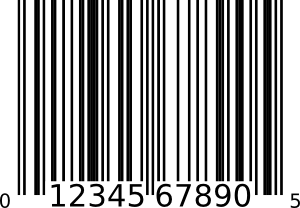
What is a UPC and how does it fit into the supply chain?
A Universal Product Code (UPC) is a type of unique identifier and barcode symbol that is used worldwide. Despite this widespread utility, it is largely irrelevant for specialty jewelry retailers and this article will explain why.
A UPC is always made up of 12 numbers. It is a common system designed to enable products from multiple vendors to be identified in a universal format when being scanned at a point-of-sale (POS). The encoding meets the standards defined per GS1 - an organization designed to optimize international trading standards.
This is comparable to a SKU, but the critical difference is that a UPC is exclusively controlled by the vendor, whereas a SKU is always controlled by the retailer. For example, a can of Coca-Cola or an iPhone has a bar code applied by Coca-Cola or Apple at the point of production. This bar code carries a UPC which allows retailers whose POS utilizes UPC logic to identify it easily. The UPC system allows retailers an easy and repeatable system to bring up retail prices across all of their vendors, whilst simultaneously enabling vendors to track and trace products across diverse companies and locations in any given supply chain.
UPC is unlikely to be relevant for independent jewelry retailers because jewelry vendors and brands do not utilize this technology. This practice is not leveraged in the independent jewelry sector because of two key factors: cost and time. UPC codes are controlled centrally and there is cost and waiting time associated with securing them. Comparatively, the high turn of styles and low volume per style make this economically unattractive for jewelry vendors. Companies that leverage this technology tend to be brands with extremely large production volumes and highly fragmented retail distribution - for example, Coca-Cola (beverages) or Goodyear (tires), or Apple (electronics).



